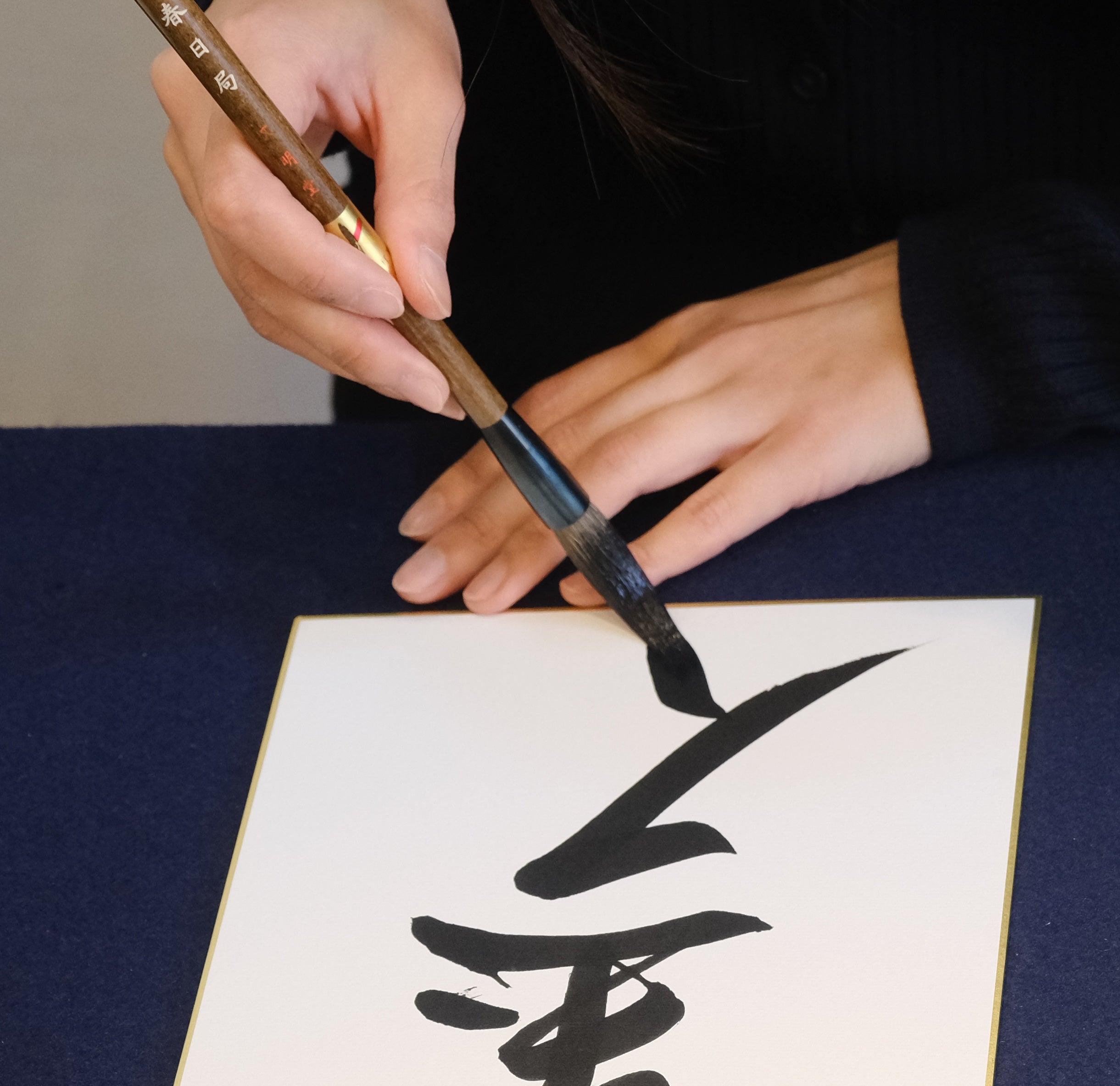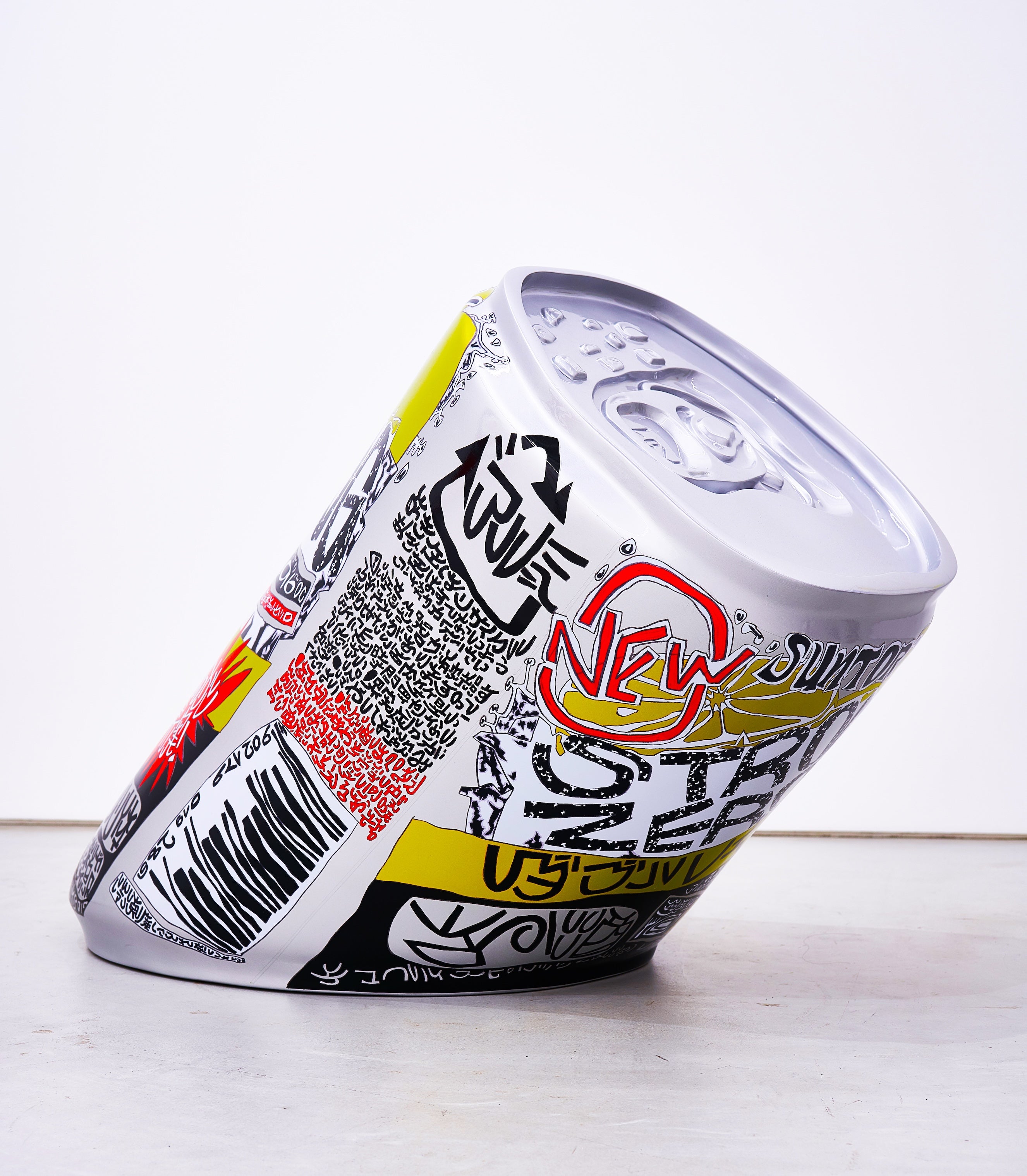ERINA TAKAHASHI
CALLIGRAPHER
"Mushin In Motion"
In this quiet and contemplative portrait, Japanese calligrapher Erina Takahashi reveals shodō not as a craft, but as a deeply personal ritual—an act of emotional presence rendered in ink. With each brushstroke, she offers more than language; she offers a feeling, a rhythm, a breath. Rooted in centuries of tradition yet entirely alive in the present, her work is a meditation on memory, mood, and meaning. Through repetition and intuition, Takahashi creates not just characters, but vessels of expression—inviting us to pause, to listen, and to rediscover the intimacy of the human hand.

PROLOGUE
Shodō, or Japanese calligraphy is a classical art form that developed during the Heian period (794–1185) after the introduction of Chinese writing. Practiced with brush, ink, and washi paper, it emphasizes the precision of stroke order, the control of line thickness, and the harmony of composition. Calligraphers study traditional scripts such as kaisho (block style), gyōsho (semi-cursive), and sōsho (cursive), each requiring distinct rhythm and technique. Beyond transcription, shodō is regarded as a form of meditation, where mastery lies not only in accuracy but in the expressive quality of each mark.
There is a lull that falls over the room when Erina Takahashi lifts her brush. It is not dramatic. It is not rehearsed. It is the kind of stillness that arises when the inner voice softens and the body listens.
For Takahashi, calligraphy—shodō—isn’t simply an art form, but an extension of her emotional life. “When I write I become mushin—without mind. My thoughts quiet. My heart settles.” This isn’t abstraction. It’s practice. The daily, deliberate cultivation of presence through repetition, reflection, and ink.
In Japan, where tradition and form are often inseparable, shodō occupies a sacred corner of the cultural house. It is both language and image, meaning and movement. A bridge between what is spoken and what is felt. “It’s part of the culture, even the signs on shops—if they were all gone, if hand-drawn characters disappeared—it would feel... lonely. Something essential would be missing.”
Her voice carries a quiet urgency. The kind that understands the fragility of beauty when it is no longer practiced. For Takahashi, every character is a vessel. A moment in time, shaped by mood and memory. “When I begin a piece I think first about what I want to express emotionally. That’s always the priority.” The outcome, then, is never mechanical—it’s emotional architecture rendered in ink.
“When I write, I become mushin — without mind. My thoughts quiet. My heart settles.”

“I think about what I want to communicate, that's what keeps me going."
She doesn’t name one. Instead, she returns to the idea of rhythm, flow, feeling. She speaks of how her hands must echo the breath of her heart. Her process is deeply intuitive—but it is also grounded in rigor. “There is no secret,” she says. “It’s practice. If you stop, the skill fades. If you continue, it grows.”
To maintain this discipline, Takahashi focuses not on perfection, but on meaning. “I think about what I want to communicate, that’s what keeps me going. And also, I love it.” In a world increasingly digitized, where handwriting is often replaced by typed convenience, artists like Takahashi remind us of something vital: the intimacy of the hand. The unique fingerprint of gesture. The slow, imperfect beauty of human expression.Her works aren’t meant to be consumed in passing. They ask us to pause. To look. To listen to the silence between strokes.What she offers is not simply text—but texture. Not just a word—but a window.And when you stand before one of her pieces, you begin to understand:
Calligraphy is not just how language looks.
It is how emotion lives on paper.
INK OF THE MOMENT
Through this lens, each brushstroke becomes a record of the moment—fleeting, unrepeatable, and entirely honest. Takahashi speaks of mushin, the state of “no mind,” where thought dissolves and the hand moves instinctively, guided not by will but by awareness. It is in this surrender, she suggests, that the ego softens and the spirit emerges. The paper does not demand mastery; it requests sincerity. What emerges, then, is not just calligraphy but a kind of silent conversation—a trace of something both deeply personal and universally human.
“There is no secret, It’s practice. If you stop, the skill fades. If you continue, it grows.”
NEXT ARTIST

ARTIST

PHOTOGRAPHER

EDO KIKIRO





